#Burgundian history
Text
Margaret of Austria is Shipwrecked and King Henry VII of England Writes to Her at Southampton – 1497
Probably by Pieter van Coninxloo
Diptych: Philip the Handsome and Margaret of Austria
about 1493-5
https://www.nationalgallery.org.uk/paintings/GROUP20
When King Charles VIII of France put into motion his plans to extend his power basis into Italy, he attacked Naples which belonged to the sphere of influence of King Ferdinand of Aragon. Holy Roman Emperor Maximilian I concluded an anti-French…

View On WordPress
#Burgundian history#Charles V#Duke of Burgundy#Ferdinand#Henry VII#Holy Roman Emperor#Isabella#Juan Prince of Asturias#Juana of Castile#King of Aragon#King of England#Margaret of Austria#Maximilian I#medieval history#Philip the Handsome#Queen of Castile#Spanish history#Women’s history
12 notes
·
View notes
Text

Matilda of France, Queen consort of Burgundy (943—26 November 981/82)
1 note
·
View note
Text

The Flight of Charles the Bold (La Fuite de Charles le Téméraire)
by Eugène Burnand
#charles the bold#charles le téméraire#art#eugène burnand#medieval#middle ages#burgundian#burgundy#history#knights#knight#europe#european#armour#retreat#battle of morat#burgundian wars#duke of burgundy#switzerland#forest#horses#horse#hounds#dogs#trees#france#valois#heraldry#house of valois burgundy#house of valois
423 notes
·
View notes
Photo

A large dagger with a crystaline hilt and a set of by-knives, Burgundian or German, made ca. 1490, rehilted ca. 1550, housed at the Kunsthistorischesmusuem, Vienna.
#weapons#dagger#rondel dagger#europe#european#germany#german#burgundy#burgundian#hre#holy roman empire#medieval#middle ages#renaissance#khm#vienna#art#history
1K notes
·
View notes
Note
Sorry if it's obvious, but I admit I'm a bit confused on there being both Dukes of Burgundy and also Counts of Burgundy and what's the difference?
Because the medieval border region between France and the HRE can't ever be straightforward and rational, there was both a Duchy and a County of Burgundy. And to make matters more confusing, they were right next to each other:
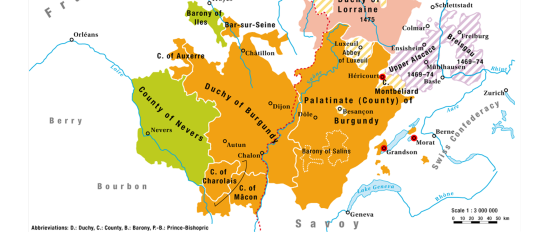
The most significant political difference between them is that the Duchy of Burgundy was part of the Kingdom of France (although they didn't always agree on that) and the County of Burgundy (better known as the Free County or the Franche-Comté) was part of the Holy Roman Empire.
However, and this is an example of how complicated medieval politics could get, both Burgundies were in personal union under the House of Valois-Burgundy, and thus were part of the Burgundian State that Charles the Bold very much wanted to make the core of his revived, independent, and coequal Kingdom of Burgundy. It didn't work out thanks to the Swiss pikemen and the treacherous Hapsburgs, but it came very close to becoming a thing.
44 notes
·
View notes
Text
The Golden Age of Dutch painting: a Prelude
Portrait of Susanna Lunden (née Fourment) or Le Chapeau de Paille, by Peter Paul Rubens (The National Gallery, London)
Suzanne Fourment Lunden, portrayed above, was Baroque Flemish artist Peter Paul Rubens‘s sister-in-law. In 1630, four years after Rubens’s first wife, Isabella Bran(d)t, died of the plague, fifty-three-year-old Rubens married sixteen-year-old Hélène Fourment. His first marriage…

View On WordPress
#Antwerp#Dutch Golden Age of painting#Eighty Years&039; War#Flanders#Flemish Baroque artist#Hélène Fourment#History#Peter Paul Rubens#Suzanne Lunden#The Burgundian State#The Duchy of Brabant#Twelve Years&039; Truce
1 note
·
View note
Text
This exquisite 15th century #helm by @lord_of_battles is a perfect example of masterful craftsmanship and protection. Based on an actual example from the Metropolitan Museum of Art, this #lateMedieval helm was worn by the wealthy #DukesofBurgundy's pikemen and men-at-arms. Not only is this kettle helm designed protect from downward strikes, it also ensures unobstructed sightlines, providing the warrior with full visibility at battle.
Follow @kult_of_athena for more medieval weapon knowledge.
#Kult of Athena#KultOfAthena#Instagram#Video#Videos#WorldofKOA#Helm#Helms#Helmet#Helmets#Armor#Armour#Burgundian Fluted Helm#Lord of Battles#Medieval Armor#Medieval Era#15th Century#Metropolitan Museum of Art#History Friday
0 notes
Text
Phrases like "shared history" and "common descent" smuggle in a lot of nationalist assumptions that I think are worth interrogating. Like, what makes a history shared? What defines the boundaries of a shared history? Can you really define a set of boundaries in the historical and genetic record that gets you anything that approximates, say, the modern nation of the French? We think of "Frenchness" as very intuitive because we have had two hundred years of nationalism treating nations as first-class concepts that need no excuse or justification, but this conception of nationhood has always been built on a mirage. Indeed, I think it's uncharacteristically stupid of someone like Bret Devereaux, who's usually pretty good at the hard-nosed material conditions side of history, to treat the idea of "common descent" as if it means anything, as if the mongrel children of the Gauls, Franks, Romans, Norse, Burgundians, Teutons, Occitanians, and so forth have ever constituted anything like a natural genetic or cultural clade.
And this is the problem with having to try to apply criteria to the concept of nation: the actual history, the thing you might reasonably base any criteria on, is irrelevant. It's mythos all the way down. The French are a nation because millions of people living there believe there exists something called the French nation, and they believe they are a part of it. That's all that's required!
194 notes
·
View notes
Text
Die on my Ride

Hey I made another cool Age of Empires 2 scenario.
The year is 437, the place is Worms, and you are Attila the Hun, history’s most guy. After waging a long and bloody war across the length and breadth of Gaul which cost the lives of your uncles Octar and Ruga, the Burgundians and their proud king Gundahari have at last capitulated to Roman authority. However, the magister militum Flavius Aetius, your best friend whom you’d never ever betray, has plotted cunning treachery. The Romans believe Gundahari is too proud and even still too powerful to fully be trusted, and so Aetius has offered you a substantial sum of gold to do the thing you were already going to do anyway: In vengeance for your slain sovereigns, kill every Burgundian you can find and burn Worms to the ground.
If the enticements of bribery and vengeance were not enough, legends also tell of a vast treasure-horde secreted somewhere in the region, a trove of unimaginable wealth in gold, silver, and artifacts. The legends also say the treasure is under a dragon’s curse and will kill anyone who tries to claim it, but that’s probably nothing to worry about, I’m sure it’ll be fine.
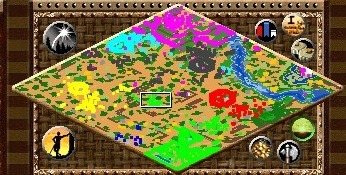



154 notes
·
View notes
Text
Pan-Turkism has been characterized by pseudoscientific theories known as Pseudo-Turkology.[64][65] Though dismissed in serious scholarship, scholars promoting such theories, often known as Pseudo-Turkologists,[64] have in recent times emerged among every Turkic nationality.[66][67] A leading light among them is Murad Adzhi, who insists that two hundred thousand years ago, "an advanced people of Turkic blood" were living in the Altai Mountains. These tall and blonde Turks are supposed to have founded the world's first state, Idel-Ural, 35,000 years ago, and to have migrated as far as the Americas.[66]
According to theories like the Turkish History Thesis, promoted by pseudo-scholars, the Turkic peoples are supposed to have migrated from Central Asia to the Middle East in the Neolithic. The Hittites, Sumerians, Babylonians, and ancient Egyptians are here classified as being of Turkic origin.[65][66][67][68] The Kurgan cultures of the early Bronze Age up to more recent times are also typically ascribed to Turkic peoples by pan-Turkic pseudoscholars, such as Ismail Miziev.[69] Non-Turkic peoples typically classified as Turkic, Turkish, Proto-Turkish or Turanian include Huns, Scythians, Sakas, Cimmerians, Medes, Parthians, Pannonian Avars, Caucasian Albanians, and various ethnic minorities in Turkic countries, such as Kurds.[69][70][71][67][68] Adzhi also considers Alans, Goths, Burgundians, Saxons, Alemanni, Angles, Lombards, and many Russians as Turks.[66] Only a few prominent peoples in history, such as Jews, Chinese people, Armenians, Greeks, Persians, and Scandinavians are considered non-Turkic by Adzhi.[66]
Philologist Mirfatyh Zakiev, former Chairman of the Supreme Soviet of the Tatar ASSR, has published hundreds of "scientific" works on the subject, suggesting Turkic origins of the Sumerian, Greek, Icelandic, Etruscan and Minoan languages. Zakiev contends that "proto-Turkish is the starting point of the Indo-European languages".[66] Not only peoples and cultures, but also prominent individuals, such as Saint George, Peter the Great, Mikhail Kutuzov and Fyodor Dostoevsky, are proclaimed to have been "of Turkic origin".[66] As such the Turkic peoples are supposed to have once been the "benevolent conquerors" of the peoples of most of Eurasia, who thus owe them "a huge cultural debt".[66][72]
The pseudoscientific Sun Language Theory states that all human languages are descendants of a proto-Turkic language and was developed by the Turkish president Mustafa Kemal Atatürk during the 1930s.[73] Kairat Zakiryanov considers the Japanese and Kazakhgene pools to be identical.[74] Several Turkish academics (Şevket Koçsoy, Özkan İzgi, Emel Esin) claim that Zhou dynasty were of Turkic origins.[75][76][77][78]
what is going on with the turkish
341 notes
·
View notes
Text
I think my favorite bombed joke I've ever made on this website was when I referred to the 1474 conflicts between the Old Swiss Confederacy and the Burgundian Kingdoms as "a historical example of anti-italian bigotry" and a bunch of medieval history blogs left microeasays in my comments calling me an idiot.
854 notes
·
View notes
Text
Margaret of Austria's Table at the Court of Savoy, Mechelen
Laid Table by Nicholaes Gillis, 1611 (Photo credit: https://www.wga.hu/frames-e.html?/html/g/gillis/laidtabl.html)
When Maximilian I, Holy Roman Emperor, designated his daughter Margaret of Austria as his procurator of the Netherlands, she bought a complex of buildings in Mechelen located across the street from the home of his grandchildren, the son and daughters of Margaret’s brother, Philip…
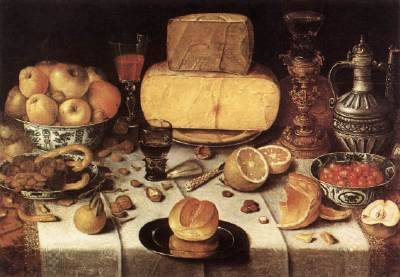
View On WordPress
#Anne Boleyn#Burgundian history#Charles V#Court of Savoy#Duchess of Savoy#Habsburg#Holy Roman Emperor#Low Countries#Margaret of Austria#Maximilian I#Mechelen#medieval history#Netherlands#Regent of the Netherlands#Women’s history
1 note
·
View note
Text
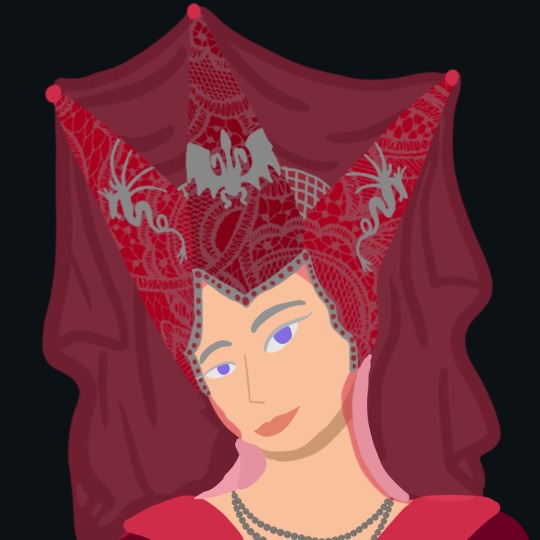
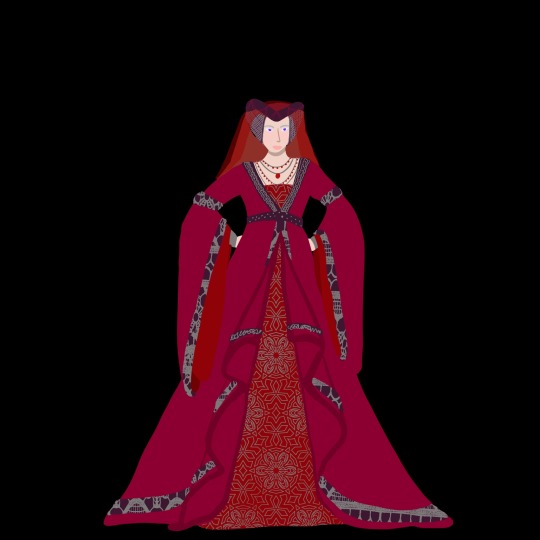
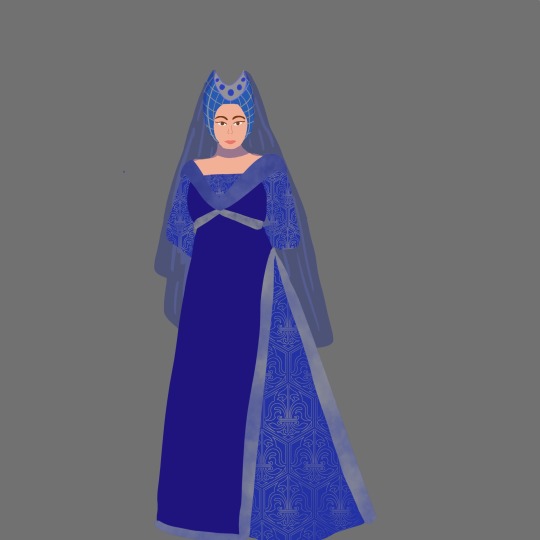



Queen Aemma Targaryen of the Seven Kingdoms and her ladies-in-waiting (Laeta Velaryon, Ronnalyn Arryn, Malia Hightower, Amara Martell)
Inspired by @15-lizards ‘s post about Aemma’s fashion influences during her time as queen. All of them wear some variations of a Burgundian gown and hennins, influenced by Aemma’s childhood in the Vale. They have their own personal spin on their outfits, also influenced by their own house histories. For example, Aemma has a triple horned hennin and a v-shaped hennin for the Targaryen dragons. Ronnalyn has a crescent shaped hennin for the moon door. Malia’s hennin is tall and the fabric on her dress resembles bricks because she’s a “high tower.” It’s not subtle but it’s not meant to be. Laeta has more fabric and accessories because she’s richer than the other ladies but it’s not garishly so because she’s not trying to outshine the queen.
#aemma targaryen#aemma arryn#queen aemma#house targaryen#house valeryon#house velaryon#house arryn#house hightower#house florent#house martell#a dance with dragons#dance of dragons#house of the dragon#HOTD#asoiaf#a song of ice and fire#game of thrones#pre asoiaf#asoiaf oc#Burgundian dress#Burgundian gown#medieval fashion#medieval dress#historical fashion#mine#hennin
41 notes
·
View notes
Text



The Battle of Grandson by Jacques Onfroy de Bréville
#battle of grandson#art#jacques onfroy de bréville#charles the bold#knights#burgundian#burgundian wars#charles le téméraire#swiss#pikemen#job#georges montorgueil#history#medieval#middle ages#switzerland#burgundy#knight#cavalry#europe#european#heraldry#louis xi
95 notes
·
View notes
Photo
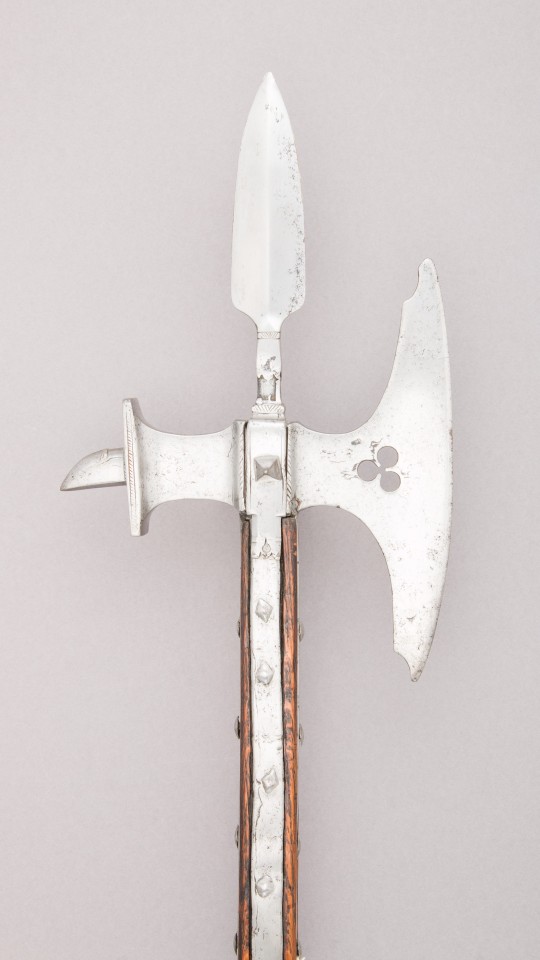
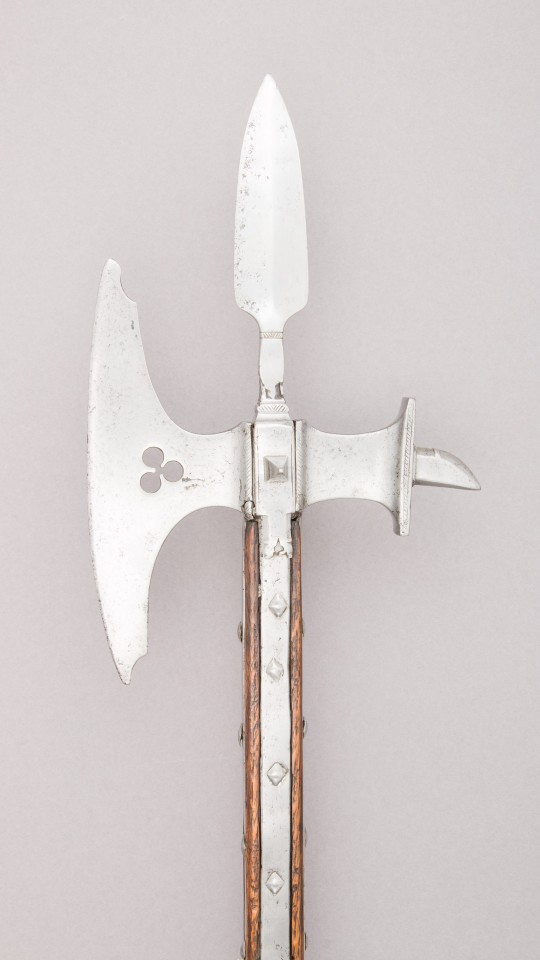
A lovely Pollaxe with a pierced blade,
OaL: 81.9 in/208 cm
Blade Length: 12.5 in/31.8 cm
Width: 8.25 in/21 cm
Weight: 5.4 lbs/2466.4 g
Burgundy, ca. 1450, housed at the Metropolitan Museum of Art.
#weapons#polearm#pollaxe#europe#european#burgundy#burgundian#medieval#middle ages#themet#metmusuem#art#history
394 notes
·
View notes
Text
Gryphon
The Histories by Herodotus (430 BC)
Live near the outer edges of the world [past Scythia but not as far as Hyperborea]
Guard gold, which is abundant in their homelands, more so than any place on Earth
Have distinctive heads with hooked beaks. Common as sculptures for this reason
Life of Apollonius of Tyana by Philostratus (170 – 245)
They live near rocks dotted with gold, which the gryphons mine with their incredibly strong beaks
Sacred to Helios [or the Indian equivalent. The Greeks believed their gods appeared under different names and guises in foreign parts, but were universal]
Looked like lions with wings and beaks
Got the better of elephants and drakons
Not great at long flight, because they didn't have true wings, but instead the palms of their feet are webbed with red membranes, which they revolve to fly [wtf]
Cannot catch tigers, as they are too swift
On Animals by Aelian (2nd century)
An Indian animal
A quadruped like a lion with enormous claws
Winged. Some report that the wings are black in the back and red along the front. Other claim they are actually white.
Cites Ctesias, who claimed the neck feathers were dark blue
Has the head and curved beak of an eagle
Eyes are like fire
Lives in mountains
Unable to be caught, except when young
Bactrians say they build their huge nests with gold, which they dig out of the ground, and Indians collect the left-overs
The Indians deny this, saying the beasts are merely defending their nests when they come to dig for gold, as beasts have no need for it
Efficient predators, but do not throw shade at lions or elephants [contradicting Philostratus]
Live in a dreary wilderness, a year's journey away from human civilization [take into account that it took Alexander two years to get to Babylon from the Indus River]
Diurnal, as gold-hunters must work during the night to avoid their gaze
Fabulous Beasts by Peter Lum (1951)
The chariots of Jupiter, Apollo, and Nemesis were sometimes drawn by gryphons
Gryphons are especially sacred to Nemesis as birds of revenge
Hagen, a king's son of the Burgundians, was kidnapped by a gryphon. He would have been a meal for its young, but he escaped and lived in a cave where he grew up and later killed the whole brood [from the Kudrun, a Middle High German poem possibly from Austria or Bavaria composed around 1250]
12-century tale said travelers to China would hunt and skin animals. During times of danger they would hide in the skins with a sword. The skins were blown up to resemble the original animal and hermetically sealed, attracting gryphons, which constantly hovered around ships like seagulls
Gryphons would then carry the skins to their nests, whereupon the sailors burst out and slayed them
Middle Ages legends of Alexander the Great said he built a glass cage transported on the wings of 8 gryphons to travel through the air
11 notes
·
View notes